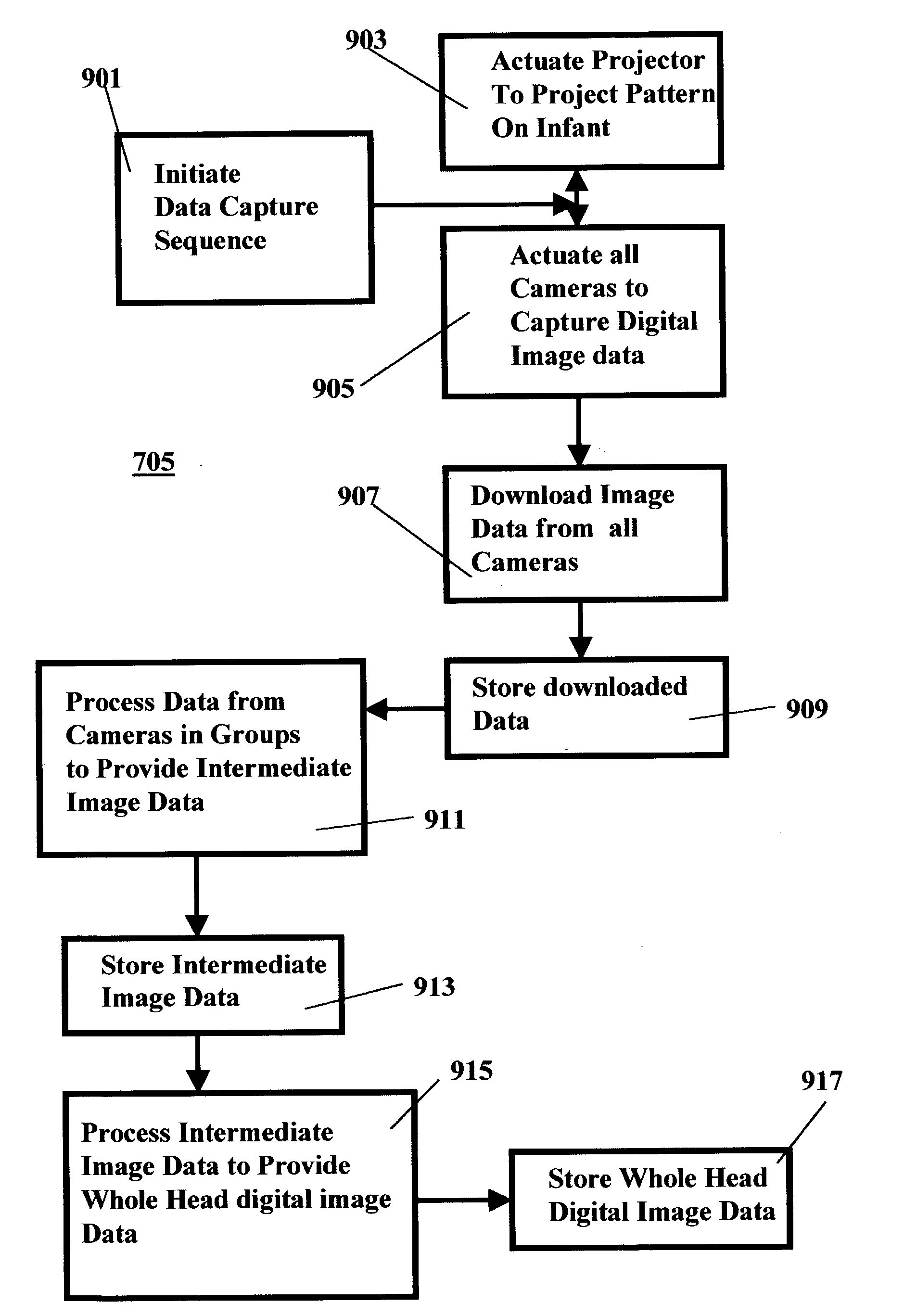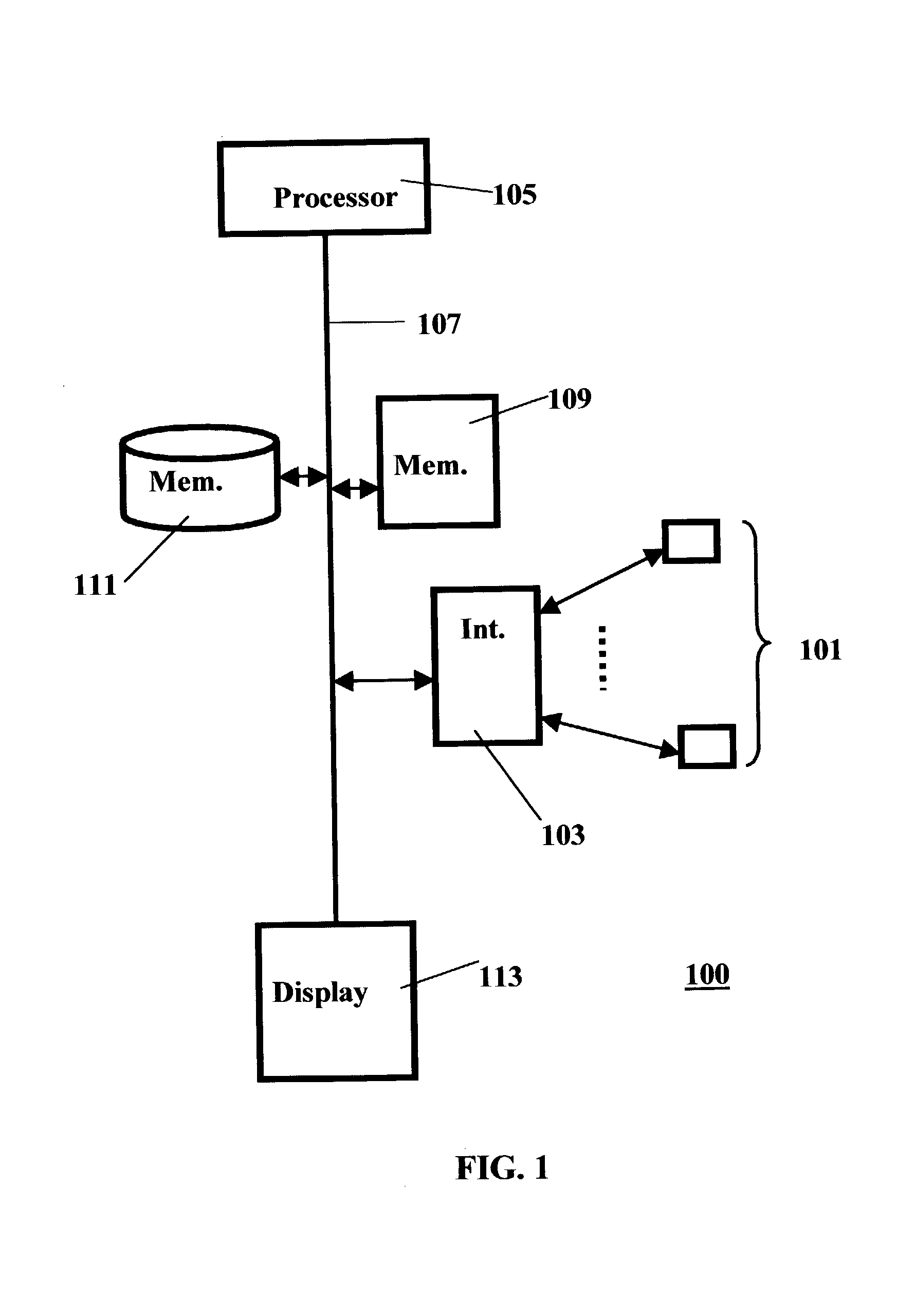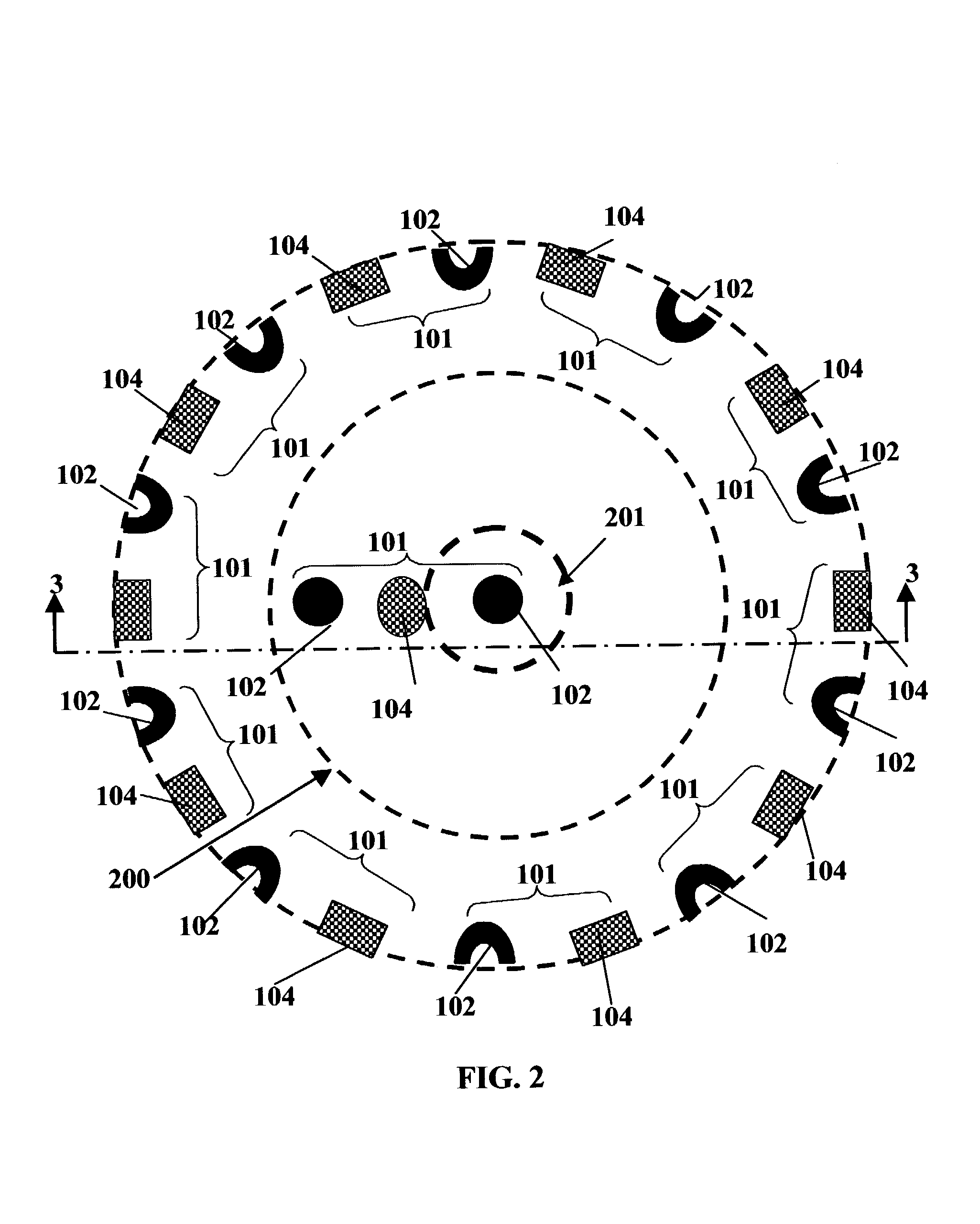Three-dimensional image capture system
a three-dimensional image and capture system technology, applied in the field of three-dimensional image capture system, can solve the problems of prior image capture techniques and systems that cannot recognize the unique challenges and requirements of a system for the digitization of infants, and the use of systems, so as to achieve accurate images of the head, avoid the effect of affecting the image quality of the infant, and avoid the effect of affecting the image quality
- Summary
- Abstract
- Description
- Claims
- Application Information
AI Technical Summary
Benefits of technology
Problems solved by technology
Method used
Image
Examples
Embodiment Construction
[0038]Turning now to FIG. 1, a block diagram of an image capture system 100 is shown in block diagram form. System 100 includes a plurality of image capturing apparatus 101. Each image capturing apparatus is operable such that a three-dimensional image is captured for a surface portion of an object that is disposed within the field of view of the image capturing apparatus.
[0039]The image capturing apparatus 101 are all coupled to and controlled by processing apparatus 105 via a bus 107. In addition processing apparatus 105 has associated with it program memory 109 and data memory 111. It will be understood by those skilled in the art that processing apparatus 105 may include one or more processors that are commercially available from a wide variety of sources. The processors may utilized the Pentium 4 or Itanium type chips, both available from Intel Corporation and included in a large number of commercially available processors. Program memory 109 and data memory 111 may be the same...
PUM
 Login to View More
Login to View More Abstract
Description
Claims
Application Information
 Login to View More
Login to View More - R&D
- Intellectual Property
- Life Sciences
- Materials
- Tech Scout
- Unparalleled Data Quality
- Higher Quality Content
- 60% Fewer Hallucinations
Browse by: Latest US Patents, China's latest patents, Technical Efficacy Thesaurus, Application Domain, Technology Topic, Popular Technical Reports.
© 2025 PatSnap. All rights reserved.Legal|Privacy policy|Modern Slavery Act Transparency Statement|Sitemap|About US| Contact US: help@patsnap.com



